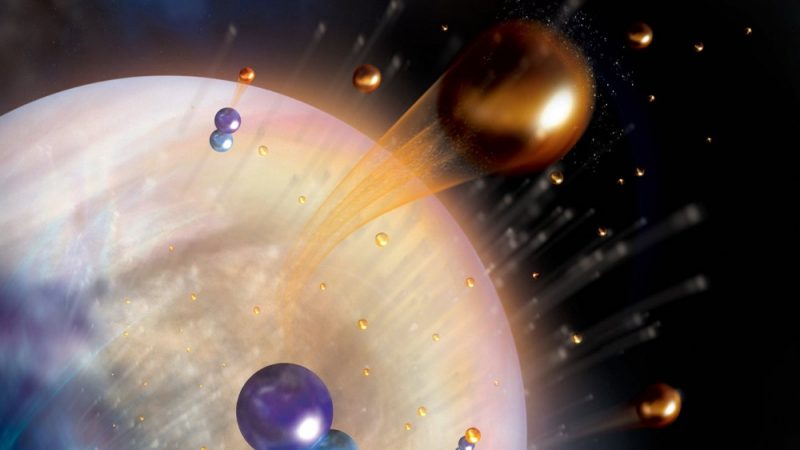Why Venus is so dry

Despite being Earth’s sister planet in terms of size, Venus is pretty parched compared to our watery world. New computer simulations may hold clues about exactly how our neighbor became so dry.
Hydrogen atoms in the planet’s atmosphere may fling off into space due to a dissociative recombination–where electrons are removed. Venus may be losing roughly twice as much water every day than previous estimates. The findings are detailed in a study published May 6 in the journal Nature and may help explain what happens to water on other planets in our home galaxy.
“Water is really important for life,” study co-author and University of Colorado Boulder astrophysicist Eryn Cangi said in a statement. “We need to understand the conditions that support liquid water in the universe, and that may have produced the very dry state of Venus today.”
The mystery of the missing water
The Earth is roughly 71 percent water. If you took all of that water and spread it across the planet, you’d get a liquid layer about 1.9 miles deep. If you did the same thing on Venus, you would get a layer that is only 1.2 inches deep.
“Venus has 100,000 times less water than the Earth, even though it’s basically the same size and mass,” study co-author and astrophysicist Michael Chaffin said in a statement.
[Related: A private company wants to look for life just above Venus.]
However, the planet was not always such a desert. Scientists believe that billions of years ago when Venus was forming, it got about as much water as Earth. At some point, clouds of carbon dioxide in Venus’ atmosphere essentially turned the planet into a greenhouse. The trapping of carbon dioxide raised surface temperatures to 900 degrees Fahrenheit. All of Venus’ water evaporated into steam and most drifted into space.
That ancient evaporation even still isn’t enough to explain Venus is as dry as it is warm or how it continues to lose water into space.
“As an analogy, say I dumped out the water in my water bottle. There would still be a few droplets left,” Chaffin said.
What’s kicking out the hydrogen?
To try to determine why Venus is so dry, the team on this study used computer models to look at the different chemical reactions occuring in the planet’s swirling atmosphere.
“We’re trying to figure out what little changes occurred on each planet to drive them into these vastly different states,” said Cangi.
They found that a molecule made up of one atom each of hydrogen, carbon, and oxygen called HCO+ may be causing the planet to leak water.
[Related: Something is making Venus’s clouds less acidic.]
In a planet’s upper atmosphere, water mixes with carbon dioxide to form these HCO+ molecules. Earlier studies found that HCO+ may also be the reason why Mars lost a large amount of its original water.
On Venus, HCO+ is constantly produced in its atmosphere, but the individual hydrogen, carbon, and oxygen atoms don’t survive very long. The electrons in the atmosphere find the atoms, recombine, and then split them in two. When this happens, the hydrogen atoms zip away and may completely escape into space. It eventually is stealing one of the two components needed for water away from Venus. The team calculated that the only way to explain Venus’ dry state was if the planet had higher than expected volumes of HCO+ in its atmosphere.
Probing Venus
Scientists have never observed HCO+ around Venus. The team believes that is because they’ve never had instruments that can properly look for the ion. None of the spacecraft that have visited Venus–including NASA’s Mariner 2, the European Space Agency’s Venus Express, or Japan’s Akatsuki and others—have carried instruments that could detect HCO+.
“One of the surprising conclusions of this work is that HCO+ should actually be among the most abundant ions in the Venus atmosphere,” Chaffin said.
[Related: We finally know why Venus is absolutely radiant.]
By the end of this decade, NASA plans to drop a probe through Venus’ atmosphere down to the surface during its DAVINCI (Deep Atmosphere Venus Investigation of Noble gasses, Chemistry, and Imaging) mission. While it won’t be able to detect HCO+, the team is hopeful that a future Venus mission might reveal another clue to the mystery of Venus’ missing water.
“There haven’t been many missions to Venus,” Cangi said. “But newly planned missions will leverage decades of collective experience and a flourishing interest in Venus to explore the extremes of planetary atmospheres, evolution and habitability.”










